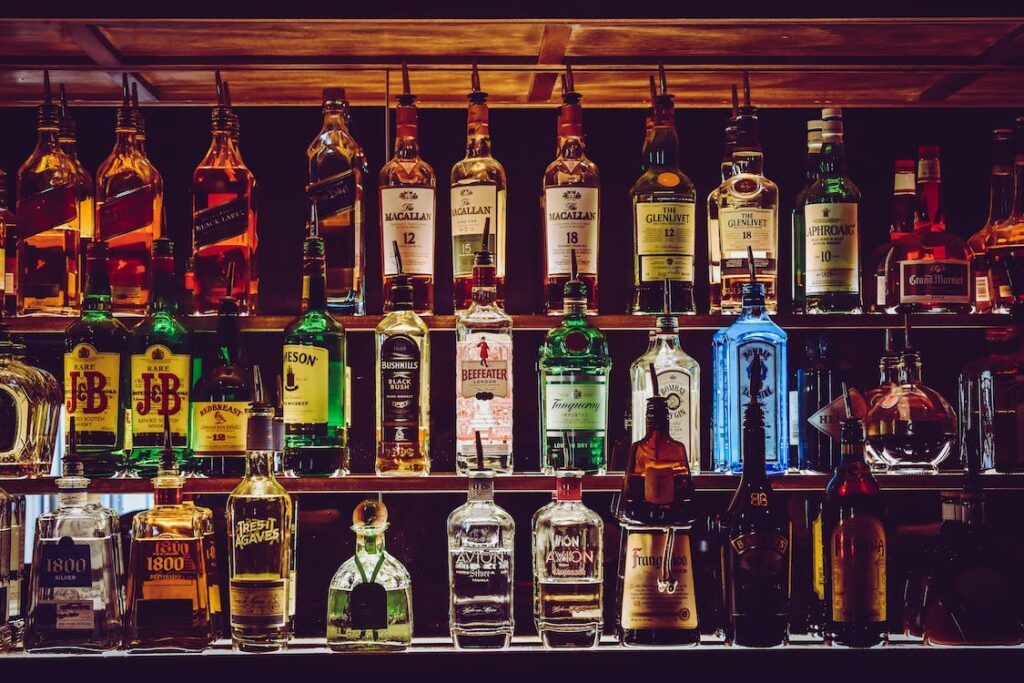This Article has been revised, edited and added to, by Poulomi Chakraborty.
- A Comparison: The Overlooked Importance of Page Load Speed
- Crafting Persuasive Content That Converts
- Understanding Your Audience
- The Power of Emotional Appeal
- Highlighting the Unique Selling Proposition (USP)
- Call to Action: Make It Impossible to Ignore
- Strategic Messaging for Startups
- Crafting a Narrative Around Pain Points
- Leveraging Data-Driven Insights
- Emotional Connection Through Personalization
- Transparent and Authentic Communication
- Dynamic Content Adjustment
- Optimizing Visual Elements for Better Engagement and Conversion
- The Importance of Visual Hierarchy
- Images and Videos
- Infographics and Icons
- Consistency Across Design Elements
- Enhancing Visual Communication for Startups
- Strategic Use of Color Psychology
- Integrating Interactive Visuals
- Visual Consistency Across Channels
- Using Visuals to Simplify Complex Information
- Emphasizing Key Messages with Visual Anchors
- Testing and Optimizing Your Landing Pages for Maximum Effectiveness
- The Importance of A/B Testing
- Using Heatmaps for Deeper Insights
- The Role of User Feedback
- Continuous Improvement
- Emphasizing the Role of User-Centric Testing
- Implementing Predictive Eye-Tracking Software
- Utilizing User Session Recordings
- Advanced Segmentation in A/B Testing
- The Importance of Post-Launch Optimization
- Leveraging Real-Time Analytics for Immediate Adjustments
- Building a Feedback Loop with Early Adopters
- Integrating SEO Best Practices into Your Landing Page Design
- Understanding SEO for Landing Pages
- On-Page SEO Tactics
- Technical SEO: Ensuring a Smooth User Experience
- Link Building Strategies
- Continuous SEO Evaluation
- Crafting SEO-Friendly Content with a Purpose
- Building Authority with Topic Clusters
- Enhancing On-Page SEO with Schema Markup
- Optimizing for Voice Search
- Local SEO for Local Startups
- Mobile Optimization as a Core SEO Strategy
- Continuous Learning and SEO Adaptation
- Conclusion: Mastering the Art of High-Converting Affiliate Landing Pages
When it comes to affiliate marketing, the landing page is your ultimate salesperson. It’s the first, and often the only, chance you have to convince your visitor to click through and buy the product you’re promoting. The effectiveness of your landing page directly correlates with your conversion rates and ultimately, your earnings. Crafting a high-converting affiliate landing page isn’t just about good design or compelling copy alone; it’s about creating a seamless, persuasive experience that guides visitors towards making a purchase. In this detailed guide, we’ll explore the strategies and tactics that can help you build affiliate landing pages that not only attract visitors but convert them at an impressive rate.
A Comparison: The Overlooked Importance of Page Load Speed
Imagine you’re walking through a mall, looking for a specific store. You find two similar stores right next to each other, both offering the exact product you want. One has its doors wide open, inviting you in without any hassle.
The other has a slightly stuck door; it takes a bit more effort to push open. Which one are you more likely to enter? The answer is obvious, and this scenario is not much different from the experience users have on your landing pages.
Speed as the Silent Conversion Killer
In the digital marketplace, page load speed can be that stuck door. It’s a fundamental element that many marketers overlook when designing their affiliate landing pages. The faster your page loads, the quicker your visitors can start engaging with your content.
This is crucial because speed influences first impressions. A slow-loading page not only frustrates visitors but also decreases the credibility of your site, which can be a major deterrent in your conversion funnel.
The Impact of Speed on Visitor Retention
Statistics from various studies highlight that a delay of just a couple of seconds in page load time can increase bounce rates significantly. For instance, if your page takes more than three seconds to load, you can lose nearly half of your visitors before they even see your content. In the competitive world of affiliate marketing, where every visitor counts, this is a significant loss.
Google’s Perspective on Speed
Moreover, Google has repeatedly emphasized the importance of page load speed as a ranking factor. This means that slower pages not only lose visitors due to poor user experience but also suffer from reduced visibility in search results. In a way, if you’re not paying attention to how quickly your landing pages load, you’re handicapping your marketing efforts right out of the gate.
Leveraging Speed for Higher Conversions
Now that we understand the crucial role of speed, how do you ensure your landing pages are up to the mark? Here are a few actionable tips:
- Optimize Images: High-resolution images can drastically slow down your pages. Optimize these files to balance quality and load time.
- Minimize HTTP Requests: Each piece of your webpage requires a different HTTP request. More requests mean slower load times. Simplify your design.
- Use a Content Delivery Network (CDN): CDNs store copies of your pages in multiple, geographically diverse data centers so that users have faster and more reliable access to your site.
- Enable Browser Caching: When you enable caching, repeat visitors to your site will be able to load the page faster since their browser saves elements of your page from their last visit.
Incorporating these tactics can significantly enhance the speed of your landing page, thereby improving the user experience and boosting your conversion rates. By focusing on speed, you’re not just opening the door wider for your visitors; you’re inviting them in with a welcoming smile, making them feel valued and respected from the second they interact with your site.
Crafting Persuasive Content That Converts
Once you’ve ensured that your landing pages load quickly, the next critical element is the content itself. Your words are the primary tool you have to persuade visitors, communicate value, and drive conversions. Crafting persuasive content goes beyond simply describing a product or service; it’s about creating a narrative that resonates with your audience’s needs and desires.
Understanding Your Audience
Before you write a single word, you must understand who you’re writing for. What are the pain points, interests, and behaviors of your target audience? Detailed buyer personas can help you tailor your message so that it speaks directly to your visitor’s needs. This understanding allows you to craft content that feels personal and relevant, significantly increasing its persuasive power.
Speak Their Language
Use the language and terms that your audience uses. If your target audience is professional photographers, talk about “ISO settings,” “aperture,” and “shutter speed.” If you’re targeting fitness enthusiasts, discuss “rep counts,” “PRs,” and “muscle recovery.” This not only shows that you understand them but also builds trust.
The Power of Emotional Appeal
Humans are emotional creatures, and often, our decisions are influenced by our emotions rather than logical deliberations. Your content should tap into relevant emotions to motivate a purchase. For instance, if you’re selling a security system, tap into the emotion of safety and peace of mind; for a fitness product, focus on the feelings of health, vitality, and aesthetics.
Storytelling as a Tool
One effective way to incorporate emotional appeal is through storytelling. Share success stories or testimonials that highlight how the product has solved a problem or improved someone’s life. These stories help potential buyers visualize their own success, making the product more appealing.
Highlighting the Unique Selling Proposition (USP)
Your affiliate product might be one among hundreds that offer similar features. Distinguishing it through its Unique Selling Proposition (USP) is crucial. What makes it different? Better? More suitable for your audience? Is it more durable, cost-effective, or perhaps more eco-friendly? Highlight these aspects in your content to show why it’s the best choice available.
Reinforce with Social Proof
Include elements of social proof such as testimonials, expert endorsements, and user reviews. Social proof helps to alleviate the skepticism of new users by showing that others have had positive experiences with the product. It’s a powerful tool that can significantly boost your credibility.
Call to Action: Make It Impossible to Ignore
Finally, your call to action (CTA) should be clear, compelling, and easy to find. Use action-oriented language that encourages visitors to take the next step now. Phrases like “Buy now and save!” or “Limited offer – Act fast!” create a sense of urgency that can motivate quicker decision-making.
Strategic Messaging for Startups
Startup founders must communicate not just the functionality of their product, but its relevance in the current market and its vision for the future. The content should reflect the innovation and the enthusiasm of the startup team. It’s about showing potential customers that they aren’t just buying a product or service; they’re investing in a solution that’s poised to lead in its category.
Crafting a Narrative Around Pain Points
To connect more deeply with your audience, center your content around their pain points. Identify not just superficial challenges that your product solves, but also deeper frustrations that your target customers face. Then, weave your product’s features into a narrative that shows your understanding of these challenges and your commitment to solving them.
For example, if your startup offers a project management tool, don’t just talk about its features like task management or time tracking; discuss how your tool can alleviate the stress of missed deadlines and disorganized workflows, ultimately fostering a more creative and productive work environment.
Leveraging Data-Driven Insights
Incorporate data and research to back up your claims. This approach not only adds credibility to your content but also positions your brand as an authority in your industry. For instance, if your startup is in the health sector, use relevant studies or statistics to bolster your discussions on how your product improves health outcomes. Presenting data effectively can persuade logically minded customers and build trust in your brand’s efficacy.
Emotional Connection Through Personalization
Creating an emotional connection through personalized content can significantly increase conversion rates. Use data analytics to understand customer behavior and preferences, then tailor your content to meet the specific needs and desires of different segments.
Personalized content could include dynamic text that changes based on the visitor’s past interactions with your site or personalized emails that address the recipient by name and reference their unique interests.
Transparent and Authentic Communication
Transparency is vital for startups striving to build trust with their audience. Clearly communicate what your product does and doesn’t do, and be upfront about pricing and any potential limitations. This honesty goes a long way in building long-term relationships with your customers, as they feel respected and valued. It’s about setting realistic expectations and then striving to exceed them.
Dynamic Content Adjustment
Be prepared to adjust your content based on feedback and changing market conditions. What works today might not work tomorrow, especially for startups in rapidly evolving industries. Keep an eye on how your audience reacts to your content and be ready to pivot your strategy as needed. This agility can help you stay relevant and maintain a competitive edge.
Optimizing Visual Elements for Better Engagement and Conversion
The visual aspect of your affiliate landing page plays a significant role in how visitors perceive your offer and, ultimately, in their decision to convert. The right use of visuals not only captures attention but also supports the persuasive copy you’ve crafted, making the overall message more compelling and easy to digest.
The Importance of Visual Hierarchy
Visual hierarchy is a key component in guiding the visitor’s eye through your page in a way that aligns with your conversion goals. By strategically using sizes, colors, and placement, you can emphasize the most important elements of your offer and lead the visitor naturally towards your call to action.
Effective Use of Colors
Colors can evoke emotions, highlight important content, and even influence purchasing decisions. For instance, red can create a sense of urgency, while blue can instill a feeling of trust. Use colors that not only align with your brand but also contribute to the overall effectiveness of the page by highlighting key areas like headlines, key benefits, and CTAs.
Images and Videos
Choosing the Right Images
The images you select should be high-quality and relevant to the content. They should enhance the message by showing the product in use or by illustrating the benefits it provides. Avoid generic stock photos that don’t add real value. Instead, opt for images that are authentic and resonate with your target audience’s expectations and needs.
Leveraging Video Content
Videos can be a game changer on landing pages, providing a dynamic way to showcase the product’s features and benefits. A well-produced video can engage visitors more deeply than text and images alone. For example, a short video testimonial from a satisfied customer can be far more convincing than written reviews.
Infographics and Icons
Infographics and icons are excellent tools for breaking down complex information into digestible, easy-to-understand visuals. They can be particularly effective in explaining how a product works or the unique features it offers, making the information clear and accessible at a glance.
Simplify Navigation
Your landing page’s layout should be clean and focused. Avoid unnecessary navigational elements that can distract visitors from the conversion goal. Every additional link or button can potentially take your visitor away from the CTA. Simplify the navigation to keep users on the path to conversion.
Consistency Across Design Elements
Ensure that all your visual elements are consistent in style and adhere to your brand guidelines. This not only reinforces your brand identity but also creates a more cohesive experience for the user. Consistency in design builds professionalism and trust, whi
Enhancing Visual Communication for Startups
For startup founders, it’s crucial to utilize visual elements that not only grab attention but also clearly communicate the uniqueness and value of their product. This involves more than just attractive graphics; it involves strategic visual storytelling.
Strategic Use of Color Psychology
Color psychology can be a powerful tool in the arsenal of a startup founder. The colors used on your landing page should align with the emotions you want to evoke in your visitors. For instance, using blue can evoke feelings of trust and security, making it ideal for fintech startups.
On the other hand, green can be used to promote environmental and health-related products due to its associations with nature and wellness. Understanding the psychological impact of different colors can help you make more informed decisions about your visual strategy.
Integrating Interactive Visuals
Interactive visuals such as animated graphs, interactive tours, and product customization previews can significantly enhance user engagement. These elements invite the visitor to interact with your product before making a purchase decision, providing a hands-on experience that static images cannot.
For example, a startup offering customizable products can use an interactive preview tool that allows users to see how their choices affect the final product. This not only increases engagement but also personalizes the user experience.
Visual Consistency Across Channels
Maintaining visual consistency across all marketing channels reinforces your brand identity and aids in building customer trust. Ensure that the visuals on your landing page mirror those used in your other marketing materials such as social media, email campaigns, and offline advertisements.
Consistency helps in creating a cohesive brand experience that is recognizable and reliable, which is incredibly important for startups trying to make a name for themselves.
Using Visuals to Simplify Complex Information
Startups often innovate in areas that can be complex and difficult to understand. Visuals can play a key role in simplifying this information, making it accessible to a broader audience.
Diagrams, infographics, and even simple icons can help explain what your product does and why it matters in an easily digestible format. For instance, a tech startup can use flowcharts and diagrams to explain the workflow of a new software tool, making it easier for potential users to understand its benefits quickly.
Emphasizing Key Messages with Visual Anchors
Use visual anchors such as banners, spotlight effects, or strategic placement to draw attention to key messages on your page. These should be used to highlight important information like unique value propositions, special offers, or critical testimonials. Visual anchors help ensure that these key messages are noticed amid the wealth of other content on your page.

Related: Check out our free SEO suite

Testing and Optimizing Your Landing Pages for Maximum Effectiveness
Once your affiliate landing page is live, the work doesn’t end there. Continuous testing and optimization are key to ensuring that your page performs at its best, maximizing conversions over time. Here’s how you can methodically improve your landing page’s effectiveness.
The Importance of A/B Testing
A/B testing, also known as split testing, is a powerful technique to understand what works best on your landing page. By creating two versions of the page and directing equal traffic to both, you can compare which version performs better in terms of conversion rates. This could involve testing different headlines, CTA buttons, images, or even entire layouts.
How to Conduct A/B Testing
- Identify a Variable: Choose one element to change in the alternate version of your page. It could be as simple as the color of the CTA button or as significant as a different value proposition.
- Split Your Traffic: Ensure that traffic to both versions of the page is split evenly and randomly to avoid bias.
- Analyze the Results: Use analytics to determine which version of the page performs better. Look at metrics like conversion rate, time spent on the page, and bounce rate.
Using Heatmaps for Deeper Insights
Heatmaps are visual representations of data where values are depicted by color, allowing you to understand how users interact with your page. They show where visitors click, how far they scroll, and what they ignore. This insight can be invaluable in optimizing the layout and content of your landing page.
Applications of Heatmap Data
- Click Maps: See where users are actually clicking and if they’re missing your CTA or interacting with non-clickable elements.
- Scroll Maps: Determine how much of your page is actually being seen by users. If important content is below the fold and not getting attention, you might need to reposition it.
- Attention Maps: Understand which parts of your page are attracting the most attention and optimize around these areas to increase engagement.
The Role of User Feedback
Direct feedback from users can provide critical insights that analytics alone might not reveal. Consider integrating tools that allow users to leave feedback about their experience on your landing page. This could be through quick surveys, feedback forms, or even user testing sessions.
Implementing User Feedback
- Surveys and Forms: Ask specific questions about the user experience. For example, find out if users feel something is missing or if they found the page easy to navigate.
- User Testing: Watching real people interact with your page can highlight issues you may not have noticed yourself. This can include misinterpretations of information or difficulties in navigating the page.
Continuous Improvement
Optimization is an ongoing process. Markets change, new competition emerges, and user preferences evolve. Regularly updating and testing your landing page ensures it remains effective and competitive. Establish a routine for revisiting and revising your landing page strategy, incorporating the latest trends and feedback.
Emphasizing the Role of User-Centric Testing
Testing should not be viewed solely as a way to optimize a page for higher conversion rates but also as a method to enhance user experience. Understanding how real users interact with your page can provide insights that go beyond basic analytics, helping you refine both the content and design to better meet user needs.
Implementing Predictive Eye-Tracking Software
Predictive eye-tracking tools use algorithms to simulate how a user might view your page, providing heat maps based on predicted gaze patterns. This can be particularly useful in the early stages of design, allowing you to optimize the layout before the page goes live.
For startups, this tool can be a cost-effective alternative to expensive eye-tracking equipment and can help refine visual elements to ensure that the most important information catches the user’s eye first.
Utilizing User Session Recordings
Session recordings are replays of user interactions on your page that can reveal pain points and areas of confusion that might not be evident from traditional analytics alone.
Watching how users move through your landing page can highlight issues like buttons that go unnoticed or content that tends to be skipped. For a startup, understanding these nuances can be the difference between a user converting or leaving the page.
Advanced Segmentation in A/B Testing
While A/B testing typically compares two versions of a page to see which performs better, advanced segmentation involves testing variations specifically tailored to different segments of your audience.
For example, visitors from social media might respond better to different messaging than those from email marketing. This type of segmentation allows you to personalize experiences more effectively, which can lead to significantly higher conversion rates.
The Importance of Post-Launch Optimization
Launching your landing page is just the beginning. The real work starts post-launch, as you gather data and feedback. Continuously analyze how your landing page performs and be prepared to make adjustments.
This iterative process of testing, learning, and optimizing is crucial for startups as it ensures that your landing page remains effective over time, even as market conditions change.
Leveraging Real-Time Analytics for Immediate Adjustments
Real-time analytics provide immediate data on how your landing page is performing, which can be extremely valuable for quickly iterating and improving. For example, if you notice a sudden drop in conversions after a change, real-time analytics can help you quickly pinpoint and reverse problematic changes or further iterate on them to enhance performance.
Building a Feedback Loop with Early Adopters
Engage with your most active users or early adopters to get detailed feedback on your landing page. These users are often more invested in your product and can provide insightful feedback that can be used to fine-tune your page. Establishing a continuous feedback loop with these users can provide you with a rich source of learning and ideas for enhancement.
Integrating SEO Best Practices into Your Landing Page Design
While the primary goal of an affiliate landing page is to convert visitors into customers, incorporating Search Engine Optimization (SEO) can significantly amplify your reach and success. SEO can drive organic traffic to your page, reducing dependency on paid sources and enhancing the longevity and effectiveness of your marketing efforts.
Understanding SEO for Landing Pages
SEO for landing pages slightly differs from traditional website SEO. Here, the focus is not only on ranking high in search engine results but also on maintaining relevance and alignment with affiliate marketing goals. This involves a careful balance between optimization for search engines and optimization for user experience and conversions.
Keyword Optimization
Begin with comprehensive keyword research to understand what potential customers are searching for. Identify both primary and long-tail keywords that are relevant to the product or service you’re promoting. These keywords should be naturally integrated into your headlines, subheadings, and body content to enhance your page’s relevance and visibility.
On-Page SEO Tactics
Title Tags and Meta Descriptions
Ensure that your title tags and meta descriptions are effectively written to include target keywords and to entice users to click through from search engine results pages. These elements are often the first impression potential visitors have of your page, so make them count.
Header Tags
Use header tags (H1, H2, H3) to structure your content not only for readability but also for SEO. Headers help indicate to search engines the hierarchy and relevance of the content, with H1 being the most critical as it should contain your main keyword.
Optimizing Images
Beyond just enhancing visual appeal, images should be optimized for SEO. Use descriptive, keyword-rich file names and alt tags to improve your page’s visibility in image search results. This also improves accessibility, which is an increasingly important factor in overall SEO performance.
Technical SEO: Ensuring a Smooth User Experience
Technical SEO involves optimizing the infrastructure of your page to improve search engine ranking and user experience. This includes:
- Mobile Responsiveness: Ensure your landing page is fully responsive, meaning it adapts seamlessly to mobile devices. Google’s mobile-first indexing prioritizes mobile versions of content for indexing and ranking.
- Page Load Speed: As discussed earlier, speed is critical not just for user experience but also for SEO. Faster pages are favored by search engines and tend to rank higher.
- URL Structure: Use clean, descriptive URLs that incorporate key phrases. This not only helps with SEO but also makes links more clickable when shared.
Link Building Strategies
Although affiliate landing pages might not typically focus on acquiring backlinks, having a few high-quality links can boost your page’s authority and search ranking. Consider creating high-quality, informative content related to the product that can naturally attract links from reputable sites.
Continuous SEO Evaluation
Just like with conversion rate optimization, SEO requires ongoing attention and adjustment. Regularly review your page’s performance in terms of rankings, traffic sources, and engagement metrics. Use tools like Google Analytics and Google Search Console to track progress and identify areas for improvement.
Crafting SEO-Friendly Content with a Purpose
While incorporating keywords is fundamental, understanding the intent behind those keywords is crucial for startups. Content should not only include relevant keywords but also address the underlying intent of the visitor’s search query. This means creating content that answers questions, provides solutions, and directly relates to the searcher’s needs.
Building Authority with Topic Clusters
Startups can enhance their SEO efforts by organizing their content into topic clusters. This strategy involves creating a main ‘pillar’ page that provides a comprehensive overview of a topic and multiple related ‘cluster’ pages that delve into specific aspects of that topic.
This structure helps search engines understand the relationship between the pages, boosting your site’s authority on the topic, which can lead to better overall search visibility.
Enhancing On-Page SEO with Schema Markup
Schema markup is a powerful tool for startups as it helps search engines better understand the content of your landing pages and enhances the way your page is displayed in SERPs through rich snippets.
Implementing schema for reviews, products, or events can make your listings more appealing and informative, potentially increasing click-through rates.
Optimizing for Voice Search
As voice search becomes more prevalent, optimizing your content for this trend is becoming crucial. Startups should consider how people ask questions verbally and integrate these conversational queries into their content. This often involves targeting longer, more natural-sounding phrases and questions that users are likely to say when using voice search.
Local SEO for Local Startups
For startups focusing on a local market, local SEO is essential. This includes optimizing your landing page to include location-specific keywords, creating a Google My Business account, and getting listed in local directories. Engaging with local communities and leveraging local events can also enhance your visibility in local search results.
Mobile Optimization as a Core SEO Strategy
Given the predominance of mobile searches, ensuring that your landing page is optimized for mobile devices is non-negotiable. This includes responsive design, fast loading times, and mobile-friendly navigation. A mobile-optimized landing page not only improves user experience but also supports SEO efforts since Google uses mobile-first indexing.
Continuous Learning and SEO Adaptation
SEO is not a set-it-and-forget-it element. It requires ongoing effort and adaptation to changing algorithms and market conditions. Startups must stay informed about the latest SEO trends and continually analyze their landing page’s SEO performance. Regular updates based on new SEO practices or algorithm changes can help maintain or improve search engine rankings.
Conclusion: Mastering the Art of High-Converting Affiliate Landing Pages
Creating a high-converting affiliate landing page is both an art and a science. It begins with understanding your audience deeply and delivering content that resonates on a personal level. Visuals play a crucial role in not only capturing attention but also in supporting your persuasive message, making your offering compelling and attractive. Continuous testing and optimization through A/B testing, heatmaps, and user feedback are indispensable for refining your strategy and enhancing your page’s performance.
Integrating SEO best practices ensures that your page not only attracts the right audience but also engages and converts them effectively. Remember, the goal is to create a seamless experience that guides each visitor towards making a purchase, with every element of the page contributing to this journey. By focusing on these critical areas, you can significantly increase your chances of converting visitors into loyal customers, maximizing your affiliate marketing success in the process.
Read Next:
- Crafting Compelling Content for Your Influencer Marketing Campaigns
- The Importance of Trust and Transparency in Influencer Marketing
- Influencer Marketing for Online Courses: Boosting Enrollments with Authentic Endorsements
- The Role of Mobile Optimization in Influencer Marketing Success
- Influencer Marketing Metrics that Matter: Tracking ROI and Engagement






















Comments are closed.